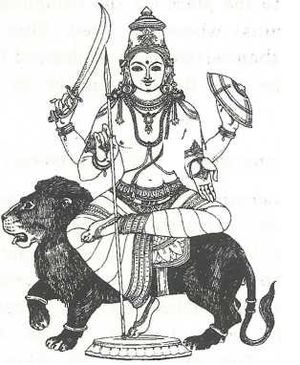Rāhu
By Swami Harshananda
Rāhu literally means ‘the siezer’.
Nine Grahas[edit]
Astrology lists nine grahas or celestial planets are called Navagrahas. It recognizes their effects on human life. The first seven are the presiding deities of the seven days of the week. They are:
- Ravi - Sun
- Candra or Soma - Moon
- Maṅgala - Mars
- Budha - Mercury
- Guru - Jupiter
- Śukra - Venus
- Śani - Saturn
- Rāhu
- Ketu
Origin of Rāhu[edit]
Rāhu and Ketu are the two nodal points where the celestial equator cuts the ecliptic. These two are also considered as grahas or planets. Rāhu was the eldest son of the demon Vipracitti and Sirihika. Ilvala, Vatapi and Naraka were his younger brothers.
Rāhu Iconographically[edit]
Iconographical works show Rāhu just as a head or as a snake-hood. Sometimes he is shown in a human form riding a lion with four arms, carrying a sword, a lance and a shield in three hands. The fourth hand shows the abhayamudrā.[1]
Other descriptions pictures him with two hands, riding a silver chariot drawn by eight horses. His left hand holds a book and the right is empty.
Eclipse due to Rāhu[edit]
It was believed that Rāhu now and then swallowed the sun and the moon, causing their eclipses, because they discovered his disguise and caused the severance of his body. Rāhu is a malefic planet. However, under certain circumstances, he may also produce beneficial results.
References[edit]
- ↑ Abhayamudrā means gesture of protection.
- The Concise Encyclopedia of Hinduism, Swami Harshananda, Ram Krishna Math, Bangalore

